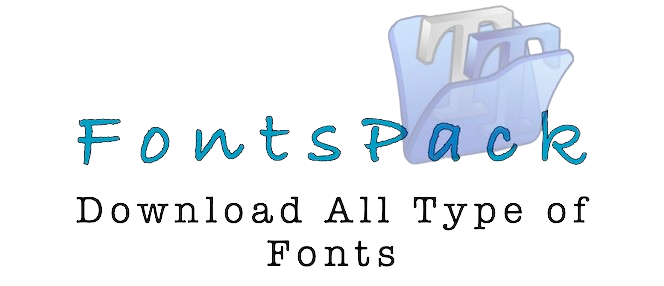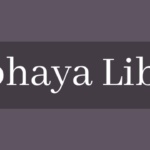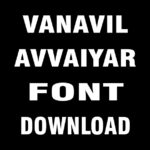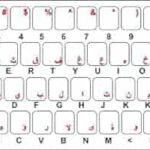Devanagari Hindi Font Download
Devanagari is an ancient script used to write Hindi. It has a complex structure that involves many rules and symbols. It requires a lot of practice and coordination to learn. So, the latest version of the Devanagari Hindi Font to download.
A few hanging consonants don’t have normal half forms; instead, they receive a halant (). Glyphs automatically generate these as compounds of the hanging form and the halant.
How to Download and Install The Font?
Devanagari is the script used for writing several Indian languages, including Hindi, Marathi, Sanskrit, Nepali, and others. When it comes to Devanagari Hindi fonts, certain features are essential for legibility, usability, and aesthetic appeal. Here are some key features:
- Glyphs and Characters:
- Devanagari script consists of a set of characters and glyphs representing consonants, vowels, and various combinations.
- A good Hindi font should include all the necessary characters and ligatures required for writing in Devanagari.
- Consonant Conjuncts (Akshar Ligatures):
- Devanagari often involves the combination of consonants to form ligatures or conjuncts. A Devanagari font should handle these combinations smoothly for readability.
- Matras (Vowel Signs):
- Devanagari has a system of mantras or vowel signs that are used to modify the pronunciation of consonants. The font should properly render these matras when combined with consonants.
- Diactritic Marks:
- Some Hindi words may require diacritic marks for proper pronunciation. A good Devanagari font should support these marks.
- Uniform Stroke Width:
- For consistency and legibility, a Hindi font should maintain a uniform stroke width throughout its characters.
- Spacing:
- Adequate spacing between characters and words is crucial for readability. The font should have appropriate default spacing and kerning.
More,
- OpenType Features:
- Support for OpenType features can enhance the functionality and aesthetics of a font. This includes features like ligatures, stylistic alternates, and contextual forms.
- Multiple Weights and Styles:
- Having different weights (regular, bold, etc.) and styles (italic, etc.) allows for versatility and flexibility in design and layout.
- Unicode Compatibility:
- The font should adhere to Unicode standards to ensure compatibility across different platforms and applications.
- Hinting:
- Hinting is the process of adding instructions to a font to optimize its appearance at small sizes on computer screens. Well-hinted fonts ensure clarity and readability in digital environments.
- Cross-Platform Compatibility:
- The font should work well across various operating systems and applications to ensure consistent display and performance.
- Readability in Various Sizes:
- A good Hindi font should be readable in different sizes, from small text in body content to larger headlines or titles.
When choosing a Devanagari Hindi font, it’s essential to consider these features to ensure that the font meets the requirements of your specific use case and provides a positive user experience.
Typefaces
Devanagari is the primary script used for writing Sanskrit, Hindi, and other languages of India and Nepal. It is a descendant of the 3rd-century Brahmi script and has evolved into the Nagari script and finally Devanagari.
The modern standard for Devanagari is Unicode, which consists of four blocks: the basic Devanagari (U+0900-U+09F0), the Indic Extensions (U+A8E0-U+A8FF), Devanagari Supplemental-A (U+1B00-U+1CFF) and Vedic Extensions (U+AAC0-U+AACFF). Most contemporary operating systems include built-in support for these fonts, and most keyboard layouts and typing tools also work with them.
Many modern Devanagari fonts have ligatures and other advanced features, but some are more suitable for certain purposes than others. For example, students might prefer the ligatures of the CDAC-Gist Surekh font, which is designed for both Sanskrit and Vedic. Meanwhile, designers may appreciate the serifs of Uttara and Santipur OT, which reflect early [medieval] typesetting styles.
Other features that are commonly included in Devanagari fonts include the halant, which is a glyph placed after a consonant to strip it of its inherent vowel. Devanagari has distinctly shaped half forms for most of its consonants, and these may be placed to the left of the base glyph in ligatures or stacked vertically with other glyphs (Akhand conjuncts). Several letters have both full and halant forms, and the halant form is typically displayed in a syllable.
Characteristics
The Devanagari script is used to write a large number of Indian and Nepalese languages, including Sanskrit. It is a descendant of the 3rd-century Brahmi script, and it has evolved into several variants, such as Hindi, Marathi, Central Indo-Aryan languages, Boro, and Konkani. It is also used to write Hindustani, a language spoken in India and Nepal. The Devanagari script can be written using a variety of keyboard layouts. Most modern operating systems support a Devanagari input system, and most touchscreen mobile phones can be used to type the script. Devanagari fonts can be used to display the script on a website or to print documents. The glyphs are encoded in Unicode and can be inserted using either an ANSI code or an entity code. The ANSI codes are usually used by Windows-based computers, while the entity codes are used in Linux and Mac OS X.
The syllable is the smallest unit of Indic text processing. Layout operations are performed independently on each syllable, and the syllable can contain several different characters. Most syllables have a full form and a half form, which are used to build conjuncts (ligatures of two or more consonants). Some syllables can even have a vattu form, which is the below-base form of a consonant. In addition, some syllables can have an aspirated form and a title.
Synonyms
There are several ways to write Hindi, depending on the type of keyboard or writing system used. Many keyboard layouts use a standard set of characters to represent Devanagari, including vowels, consonants, and symbols. This makes it easy for people familiar with the script to locate and type these characters, streamlining the process of text input and enhancing productivity.
In addition to the standard characters, some languages may include letters that do not have a corresponding Devanagari symbol. These letters are known as anusvar, and they are used to indicate that the sound is not a part of a particular syllable. Anusvars can also be used to represent the nasalization of a vowel, and are often incorporated into ligatures.
So, there are two main types of Devanagari vowels: monophthongs and diphthongs. Monophthongs are pronounced as single, pure sounds, while diphthongs are pronounced as two adjacent sounds glided together. Most modern Hindi speakers pronounce monosyllabic words as diphthongs.
Indic text can be written using several coding systems, including ANSI codes and Hex entities. The ANSI code is the quickest way to enter Devanagari in Windows-based computers, while the Hex entity codes can be entered into any HTML webpage to display Devanagari. Some keyboard layouts also offer alternate key combinations for entering Devanagari. The most common is the InScript keyboard layout, which is used in most modern computer operating systems. It is also supported by most touchscreen mobile phones and is available as a separate input tool for Linux and Mac OS X.
Variations
A font is a typeface that contains a set of characters. These characters can be letters, numbers, symbols, and punctuation marks. Fonts are used in a variety of ways including printing, screenwriting, and web design. There are many different types of fonts available, and each has its characteristics. Some are free to use while others are more expensive.
So, the Devanagari script is a descendant of the 3rd-century Brahmi script and is used in India, Nepal, and Southeast Asia to write Hindi, Sanskrit, and some other languages. The Devanagari alphabet has 58 vowels and 24 consonants. It is based on a phonetic transcription of the Latin alphabet and can be written using a standard keyboard layout.
There are many variations of the Devanagari font. Some of these variations are ligatures or clusters, while others are purely typographic. For example, some consonants have a “below-base form” that appears below the base glyph, while others may only have a full form. In addition, several half forms can be built from the context variants of other consonants.
The Khand Devanagari font is a free-to-use font for drafting text graphics and logos. So, it features a wide range of colors and hundreds of text effects. It can also be used to generate attractive text overlays on any image or background. So download now the latest version of Devanagari Hindi Font from here.






